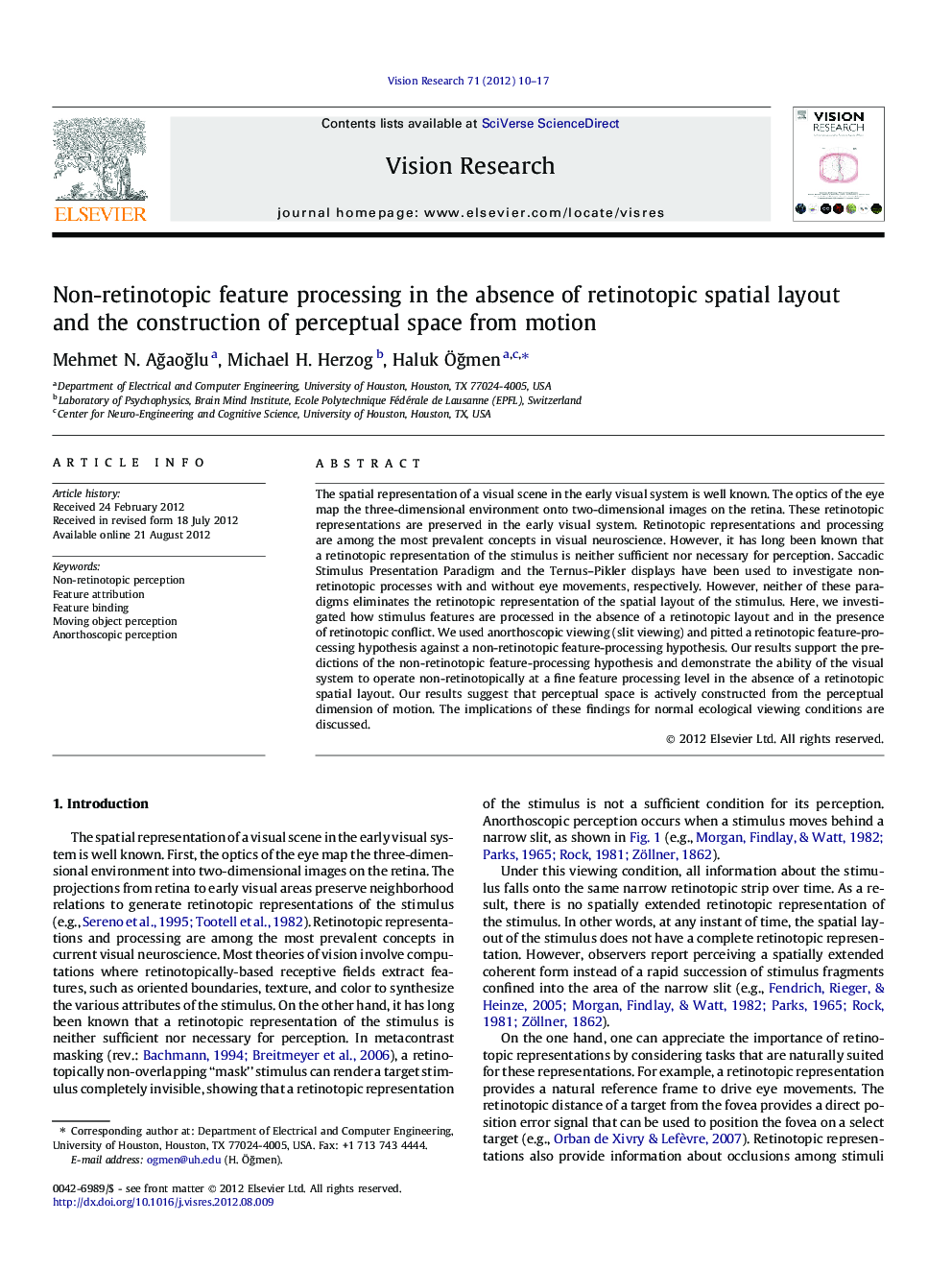| Article ID | Journal | Published Year | Pages | File Type |
|---|---|---|---|---|
| 4033901 | Vision Research | 2012 | 8 Pages |
The spatial representation of a visual scene in the early visual system is well known. The optics of the eye map the three-dimensional environment onto two-dimensional images on the retina. These retinotopic representations are preserved in the early visual system. Retinotopic representations and processing are among the most prevalent concepts in visual neuroscience. However, it has long been known that a retinotopic representation of the stimulus is neither sufficient nor necessary for perception. Saccadic Stimulus Presentation Paradigm and the Ternus–Pikler displays have been used to investigate non-retinotopic processes with and without eye movements, respectively. However, neither of these paradigms eliminates the retinotopic representation of the spatial layout of the stimulus. Here, we investigated how stimulus features are processed in the absence of a retinotopic layout and in the presence of retinotopic conflict. We used anorthoscopic viewing (slit viewing) and pitted a retinotopic feature-processing hypothesis against a non-retinotopic feature-processing hypothesis. Our results support the predictions of the non-retinotopic feature-processing hypothesis and demonstrate the ability of the visual system to operate non-retinotopically at a fine feature processing level in the absence of a retinotopic spatial layout. Our results suggest that perceptual space is actively constructed from the perceptual dimension of motion. The implications of these findings for normal ecological viewing conditions are discussed.
► Non-retinotopic representations are investigated. ► Spatial layout of the stimulus is reduced to a minimal retinotopic region. ► Feature processing follows non-retinotopic figural configuration. ► Perceptual space dimension is constructed from perceptual motion dimension.
